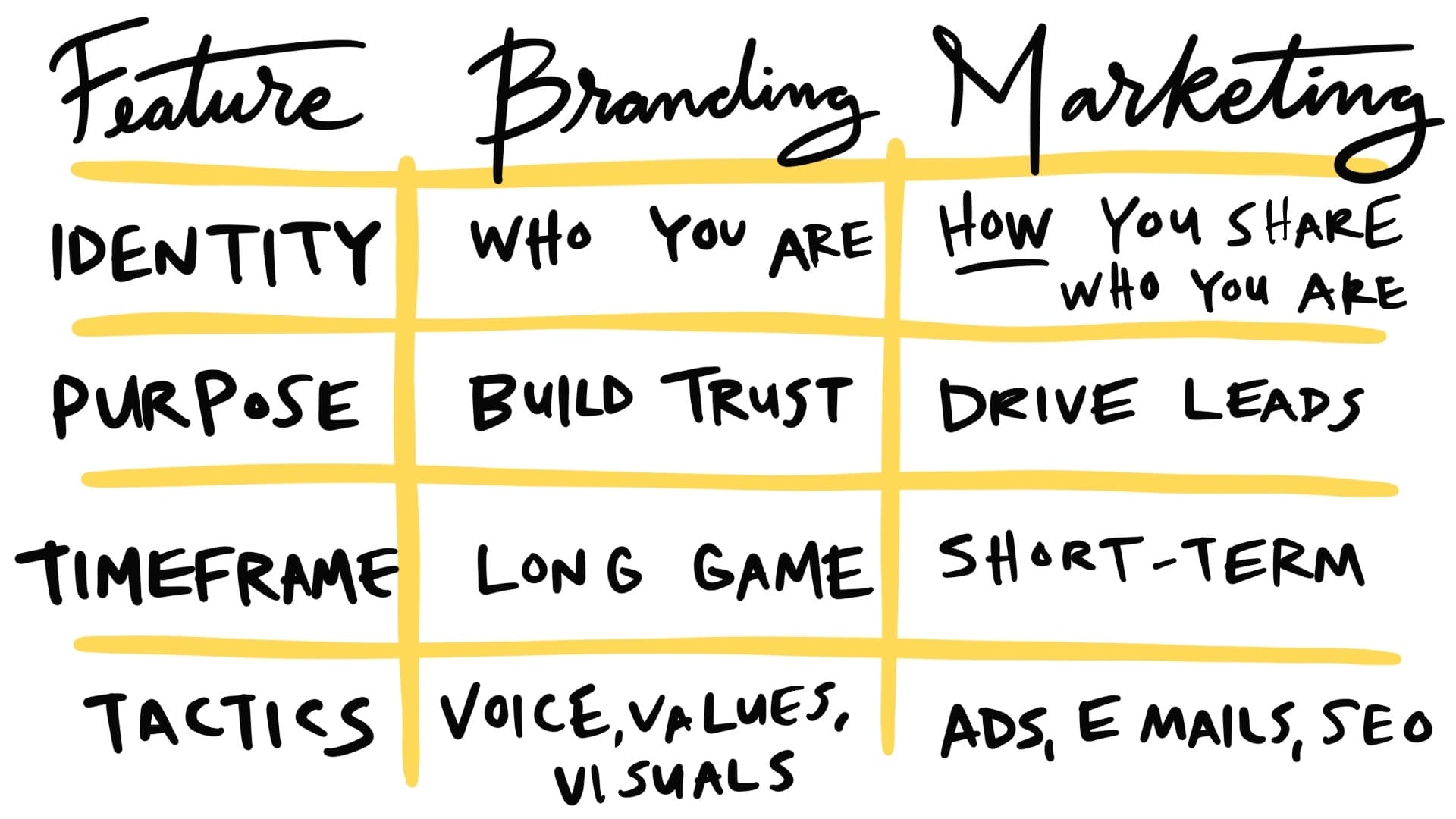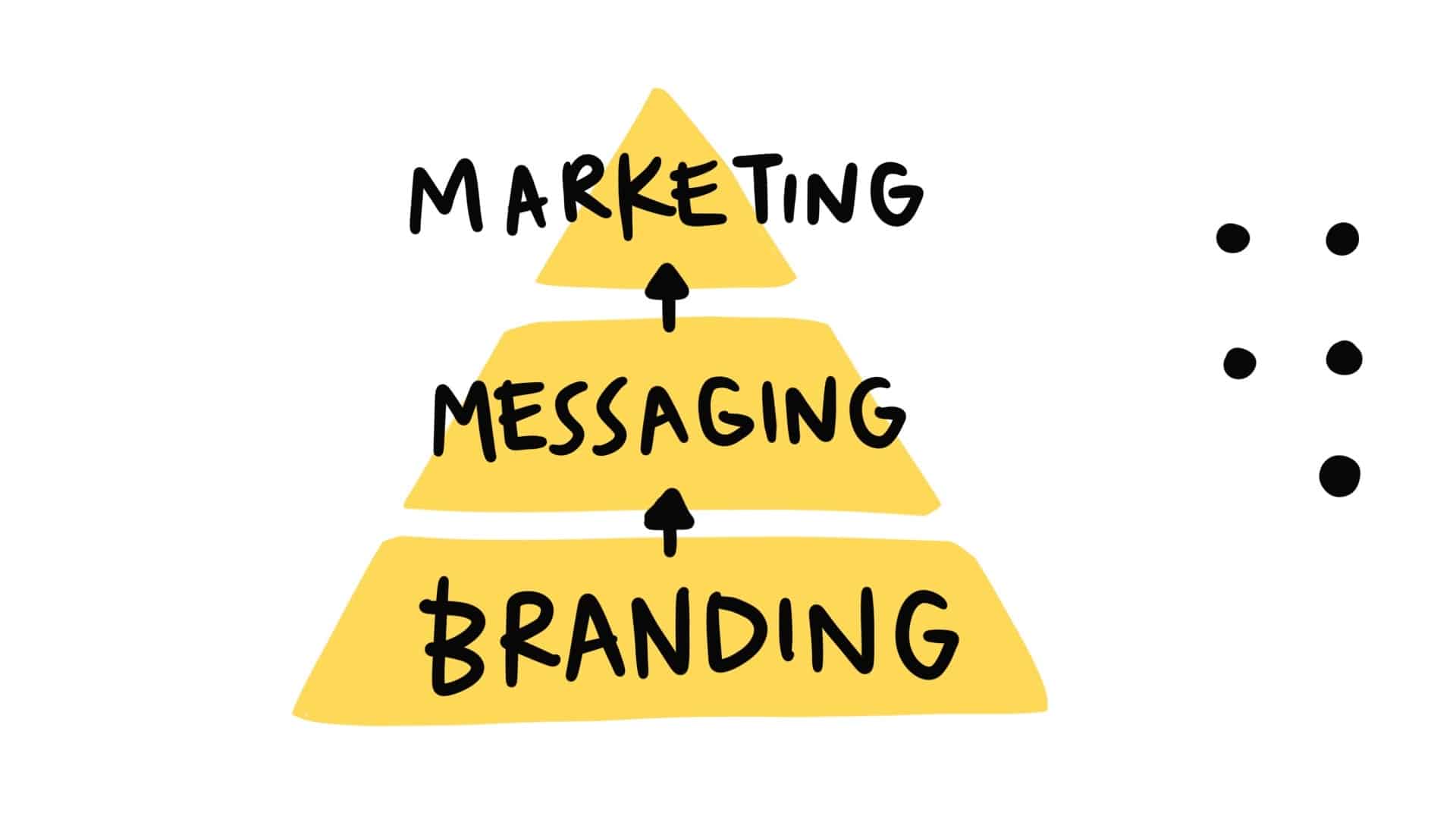
What’s the Difference Between Branding and Marketing?
If you’ve been in business for more than five minutes, you’ve probably heard the words branding and marketing tossed around like a football in a tailgate lot. Sometimes even seasoned professionals use them interchangeably. But here’s the thing: they’re not the same. Not even close.
At Market House, one of the first things we help clients do is get clarity on these two pillars of business growth — because when you understand the difference between branding and marketing, you unlock a strategy that doesn’t just sell but sticks.
In this guide, we’ll break down the distinction, show you how they work together, and help you see why this isn’t just semantics — it’s strategy.
Branding Is Who You Are
Let’s start with branding, because this is the root system of everything else your business does.
Branding is not your logo. It’s not your website. It’s not your colors.
Those are expressions of your brand — but they are not your brand.
Branding is your identity. It’s what you stand for.
It’s how people feel about your business.
It includes things like:
- Your mission and values
- The voice and tone you use in messaging
- The experience your customers have at every touchpoint
- Your visual identity (yes, your logo, but also how your whole brand looks and feels)
- The emotions people associate with your brand
At its core, branding is how you make people care.
Whether you’re a luxury brand that exudes prestige or a down-to-earth startup that oozes authenticity, your brand tells the world who you are — and more importantly, why that matters.
Marketing Is How You Share Who You Are
If branding is who you are, marketing is how you tell people about it.
Marketing is the vehicle — the methods and tools you use to spread your message, attract attention, generate leads, and drive revenue.
Marketing includes things like:
- Social media strategy
- Paid advertising campaigns
- Content marketing (blogs, videos, podcasts)
- SEO
- Email marketing
- Promotions and sales tactics
Marketing is tactical and ever-changing. Platforms shift. Algorithms evolve. Campaigns come and go. But the thing that anchors all of it? You guessed it — your brand.
Why People Get It Confused
Here’s why so many people mix the two up: they work together. And when done well, they should feel seamless.
Think of it this way:
Branding is your message. Marketing is how you deliver it.
Still not clicking? Let’s throw in a metaphor.
Branding vs. Marketing: The Coffee Shop Metaphor
Let’s say you open a coffee shop.
- Your branding is the entire vibe: the cozy interior, the mission to source beans ethically, the indie playlist, the ceramic mugs with personality, the baristas who remember your name.
- Your marketing is how you get people in the door: social media ads promoting your seasonal latte, influencer partnerships, email campaigns with local events, SEO-optimized blogs about fair-trade coffee.
Without branding, your coffee shop is just another place with caffeine.
Without marketing, no one knows your place exists.
Table: Quick Comparison of Branding vs Marketing
Why Branding Should Come First
We get this question a lot:
“Which comes first — branding or marketing?”
Short answer: Branding. Every time.
Because without clarity on your brand — who you are, what you stand for, who you’re for, and how you’re different — your marketing efforts will feel… generic.
People can smell inauthenticity a mile away. If your message is inconsistent or your visuals are scattered, your audience will either:
- Get confused (and leave), or
- Feel indifferent (and never engage)
Great branding fuels great marketing. Period.
Branding Without Marketing = Hidden Brilliance
Marketing Without Branding = Loud Confusion
If you’ve got a killer brand but nobody sees it, that’s a problem.
If you’re everywhere online but your message lacks clarity, that’s another problem.
You need both.
One sets the foundation, the other brings it to life.
One builds connection, the other drives action.
How Branding and Marketing Work Together
At Market House, we like to think of branding and marketing as partners in growth. Your brand sets the tone; your marketing amplifies it.
Example:
Say you’re launching a new product. You’ve got:
- A logo
- A product name
- Packaging
- A unique brand story
You could run Facebook ads and maybe even get some clicks. But without a strong brand identity:
- Your messaging might feel inconsistent
- Your visual design may not resonate
- You’ll attract people once, but struggle to retain them
With a clearly defined brand, your marketing now has a voice, a point of view, and a promise — and that’s what builds trust and recognition over time.
What Happens When You Get It Right
When your brand is clear and your marketing is aligned, here’s what happens:
- You build recognition: People remember you and know what you stand for
- You earn trust: Audiences are more likely to engage with (and buy from) brands they trust
- You increase efficiency: Your campaigns work better because they’re consistent and targeted
- You scale strategically: Every move builds on the last instead of starting from scratch
This is the kind of momentum we help our clients build. And it’s not a buzzword — it’s brand clarity in action.
Common Misconceptions About Branding and Marketing
Let’s bust a few myths.
❌ “Branding is just your logo.”
Nope. That’s like saying your personality is just your haircut.
❌ “Marketing is only advertising.”
Marketing includes everything from your email nurture sequence to your organic TikTok strategy.
❌ “I don’t need branding until I’m bigger.”
Actually, that’s when you need it most. Early branding decisions shape everything that follows.
What Market House Brings to the Table
At Market House, we’ve worked with startups, nonprofits, national brands, and everything in between. And one thing’s always true:
The businesses that win long-term don’t just sell well — they connect deeply.
We help you build a brand that people care about and then create marketing strategies that amplify your impact, grow your audience, and drive measurable results.
Our approach to branding and marketing isn’t one-size-fits-all. It’s custom-fit to your goals, your voice, and your audience.
Need to build your brand from scratch?
Ready to launch a campaign that actually converts?
Not sure where to start?
We’re here for it.
TL;DR: Branding vs Marketing
- Branding = identity. Marketing = promotion.
- Branding is about perception. Marketing is about execution.
- Branding builds connection. Marketing drives traffic.
- You need both. And they need to work together.
When they do? That’s when the magic happens.
SEO-Boosting FAQs
What is the main difference between branding and marketing?
Branding is your identity — it defines who you are and how people feel about your business. Marketing is the strategy and tools used to promote that identity and generate engagement, leads, and sales.
Can I do marketing without branding?
Yes, but it’s not recommended. Without branding, your marketing may lack clarity and consistency, which leads to weak results and brand confusion.
Should I invest in branding first?
Yes. Your brand is the foundation of all communication, design, and customer interaction. A strong brand makes your marketing efforts far more effective.
How do branding and marketing work together?
Branding shapes the message; marketing shares the message. The better your branding, the more effective your marketing.
Ready to Build a Brand That Actually Grows?
Here’s the bottom line: businesses that understand the difference between branding and marketing — and know how to leverage both — don’t just exist in their industry. They lead it.
At Market House, we help companies clarify their identity, refine their message, and launch marketing strategies that actually move the needle. Whether you’re starting from scratch or looking to realign your efforts, we can help you build something that lasts — not just market louder, but connect deeper.
Want to talk through where your brand stands and how to get it working with your marketing — not against it?
Reach out to our team and let’s start building something remarkable.




